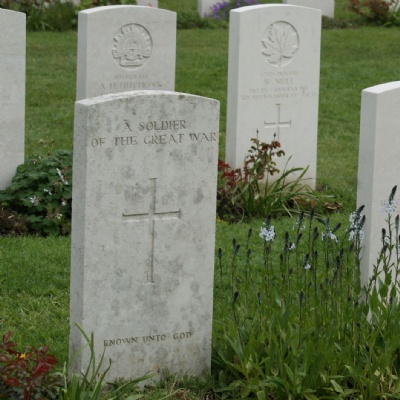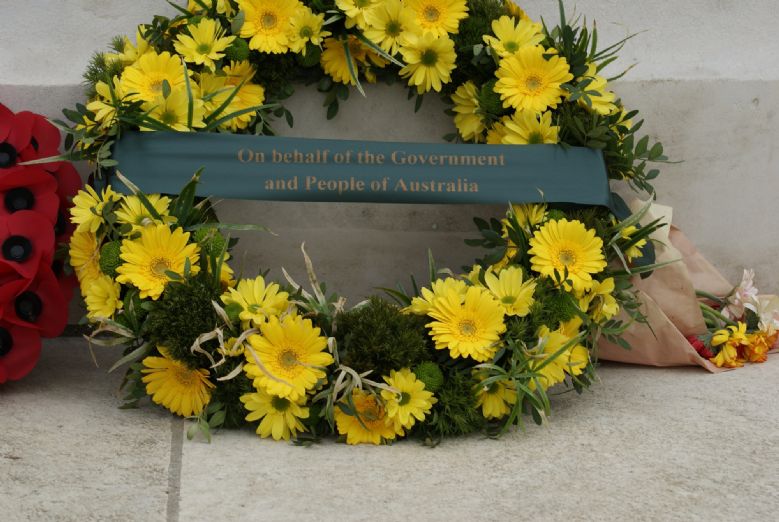A Final Farewell to Arms?

This year’s trip with our Year 9 pupils to the battlefields of the First World War was probably as straightforward as any of the twenty or so I have been on over the years. The journeys back and forth passed without incident, the customs checks took no longer than might reasonably be expected and the weather, while not exactly dry and warm, did not disrupt any of our plans. If the biggest inconvenience was the time it took to cover the last mile on the way home, thanks to the traffic coming away from the Harlequins match at Twickenham, we certainly had nothing to complain about.
I had feared that I might suffer from a degree of battlefield history fatigue, having last been there only in October, albeit with friends rather than with the school. We had talked about making the trip for a long time, so it was good to finally turn it into a reality. Because it was the first time our friends had been, it made sense to take them to the sites that I know most about, which therefore included many of the ones we were due to visit last week.
My concerns proved unfounded, not least because the first day of our visit coincided with the annual ANZAC Day, when the people of Australia, New Zealand and several Pacific Island countries commemorate their compatriots who have been killed in the last hundred or so years in wars, conflicts and peacekeeping operations, and mark ‘the contribution and suffering of all those who have served’.
On 25th April 1915, the first men from the Australia and New Zealand Army Corps (ANZAC) landed at Gallipoli in Turkey as part of the Allied forces that were tasked with capturing the peninsula, before going inland with the aim of taking Constantinople and knocking the Ottoman Empire out of the war. It was an aim that was never realised, with over 50,000 men losing their lives in the heat and dust of the various battles, over 10,000 of whom came from the Antipodes – sacrifices that played an important role in forging a psychological focal point in the early years of these recently federated countries.
We visited Vimy Ridge on the middle day of our trip, where Canadian forces fought so bravely to defeat the German forces occupying the high ground around the town of Arras. We also went to Beaumont-Hamel on the Somme, where a newly formed battalion of nearly a thousand men from Newfoundland was wiped out before they even reached the front lines. Both sites also reminded us of the importance of such efforts in forging a national spirit among nations that were either newly formed with greater autonomy under the British Empire or were heading towards such independence.
There was a short visit to Poperinge on the first day to see Talbot House, a place of rest and relaxation behind the front lines, and a more exacting stop at the execution post in the town, where several unfortunate young men met their deaths by firing squad after being convicted of mutiny or desertion. In total, over 350 men were executed during the course of the war, probably about a dozen of them on the site where we were, all of whom were later formally pardoned by the government with the admission that most had been suffering from PTSD.
From there, we went to Tyne Cot, the largest British and Commonwealth cemetery in the world, where nearly 12,000 men are buried, two-thirds of them unknown. It was here that I first started to wonder why there seemed to be so many Australian visitors and why they were displaying a degree of solemnity beyond the usual level that might be expected. I then noticed that there were more wreaths on the central Stone of Remembrance than can normally be found in April and, on closer inspection, they all had a link to Australia or New Zealand.
After a visit to the German cemetery at Langemark, which cannot be more than a quarter of the size of Tyne Cot, but which contains four times as many bodies, we dropped down from the higher ground that the invaders occupied for most of the First World War to the town of Ypres, which was all but destroyed by 1918. It has since been rebuilt with an accuracy that can only be described as magnificent, to the point where it is hard to persuade children and grown-ups alike that they are not looking at genuine medieval buildings.
After a frenzy of shopping at the local chocolate shop and the consumption of the perennial chicken and chips in one of the restaurants in the town square, we made our way to the Last Post ceremony at the Menin Gate. This has taken place every night at 8pm since July 1928, only transferring to Brookwood Military Ceremony in Surrey during the time of the Nazi occupation of Belgium in the 1940s, and taking place more than 30,000 times. The Menin Gate itself is currently undergoing substantial restoration work, with the target date for completion not until 2027, which will mark the centenary of the memorial’s original construction. However, the scaffolding has been tastefully disguised as far as it can be and it was still possible, though not easy, to secure a decent view.
The ceremony itself is always moving, but this year was particularly poignant because it featured a performance on a didgeridoo to mark ANZAC Day alongside the usual group of buglers. The tune played on this unusual instrument was not obviously recognisable, but why should it have been? I am guessing it was a traditional lament played to mourn the dead, though presumably not those killed in the sort of wars we understand. Whatever its origins, it was deeply moving, made strangely more so by the indifference of a loan pigeon that flew overhead and landed nonchalantly on the top of the gate itself.
There was also time for a visit to the Somme battlefields, where the British army suffered its worst ever day of casualties on 1st July 1916. Nearly 20,000 men died that day, for very little gained ground or captured fortifications. At a cemetery near the village of Mametz, over 150 of the 160 crosses have 1st July as the date of death. An inscription at the entrance gate mirrors a sign that a fellow soldier first put up just a few days after the initial battle: ‘The Devonshires held this trench. The Devonshires hold it still.’ It never fails to bring a lump to my throat and a tear to my eye, particularly when combined with the poetry of William Noel Hodgson, who lost his life there that morning.
This year marked the 108th time that ANZAC Day has been commemorated and I was witnessing it for the first time in my 108th term as a teacher, which is just a meaningless coincidence but which has a neatness that I enjoy. Like all such commemorations, ANZAC Day has been used by those in power for different purposes over the years, from boosting army recruitment to promoting national independence. Whatever motives might have been deployed, it is nevertheless clearly an enduring annual milestone for the people of the countries it involves and a focus of deep thought. As I listened to the strange music and watched the indifferent pigeon, I found I had more than usual upon which to reflect.
